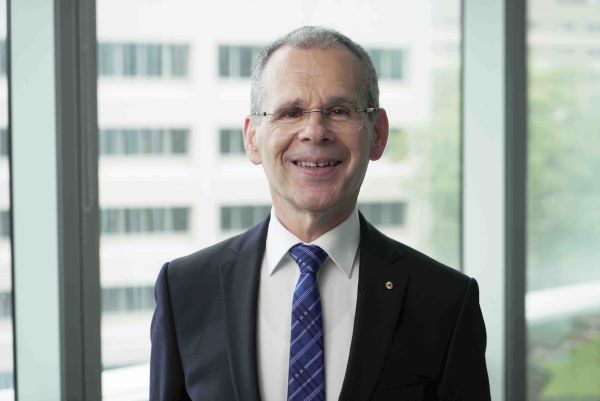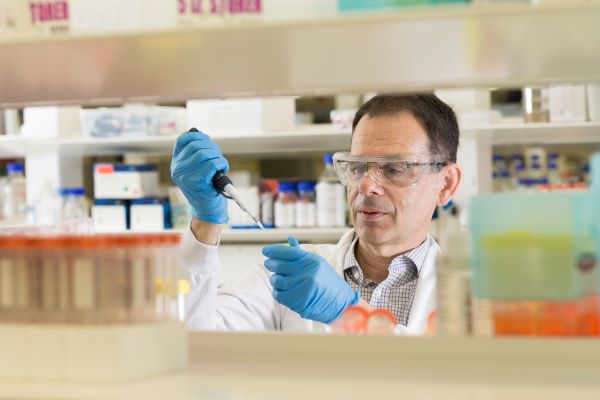The people behind a multi-award winning innovator
The 2021 winner of the Prime Minister’s Prize for Innovation, Professor Tony Weiss, says he wouldn’t have reached his position today without key mentors, influencers and funders.

A few decades back, when a young and impressionable Tony Weiss was working on his PhD, his mentor, Professor Gerry Wake, sat in an honoured position at the University of Sydney; the McCaughey Chair in Biochemistry. Through Professor Wake’s guidance, Tony says he “learnt how to do science”, setting him on an incredible career path in which he has founded successful biochemical companies, secured 163 patents and in 2021 won the Prime Minister’s Prize for Innovation for his work on revolutionary wound healing treatments. But amongst all the accolades and titles, one that is perhaps the most inwardly satisfying is that he now sits in his late mentor’s chair, the McCaughey Chair in Biochemistry.
“Gerry was a great guy,” Tony says. “He taught me how to do science and really solid research. You can be a good doctor or a bad doctor, you can be a good tradesman or a bad tradesman, and it’s the same thing in science, too. If you do the science well, you can ask nature a question and nature will give you an answer back in a very precise way. If you’re rigorous, careful and methodical, you can really progress well.”
After his PhD, Tony went on a Fulbright Scholarship to Stanford University in the US, before Professor Wake asked him to apply for a job at the University of Sydney. During the work there, he had a “Eureka moment”, becoming excited about elastin, the protein that repairs elastic tissues in the skin, arteries, bladder and lungs, and the potential for a synthetic version to repair wounds such as burns. As the research progressed, he formed Elastagen in 2008, gathering interest and investors from around the globe. But, like any start-up, money was a constant concern. “We’d already received the first amount of venture capital – multimillion dollar funding – but like with everything in start-ups, it was still at the cash-burning stage, so we desperately needed cash from elsewhere, not from an investor who was going to want another piece of the pie,” Tony says. Then, in 2013, the NSW Government started its Medical Devices Fund and granted Elastagen $2 million. “It was a grant with the proviso that ‘if you succeed, one day pay us back’,” Tony says. “It was a pretty good deal”.
In 2017, Elastagen re-applied for funding, becoming the first company to receive a second grant from the Fund, an additional $4 million. “We’ll always be grateful,” Tony says. “Without them, we never would have succeeded.”

The following year the company was sold for more than $300 million, and it will be one of the first to fully repay the NSW Government. The Elastagen wound healing technology has been tested in four successful clinical trials, and is progressing towards approval for use across the world. “It could be in the US first, could be the UK, or could be Australia. I’d like to see it used in Australia first, since this is where it was developed,” he says.
As well as Professor Wake, Tony acknowledges the many influencers, mentors and “a village of smart minds” that encouraged him along the way. They include a primary school teacher who taught him about excellence, and a former colleague at Sydney University, Steve Martin, who agreed to start the elastin journey with him. “We stood in front of the whiteboard in my office and I said, ‘There’s the plan. Are you in?’ And to his credit, he said, ‘Yes!’”
Back at Vaucluse Boys’ High School, Tony had chosen chemistry over biology. “I was interested in the molecules of the world around us and how they all fit together. You can make glue or a can of paint – they all need chemistry.” But then a biology teacher held a voluntary lunchtime class in which he pretended they were in a tiny submarine, touring the body, showing cells, DNA, etc, and the way the body worked and repaired itself. “I thought, wow, if only I could use my chemistry to do that,” Tony says. “But I didn’t have good careers guidance, so no-one had said ‘there’s this amazing area of biology called biochemistry’.”
While studying first-year chemistry at the University of Sydney, he experienced another Eureka moment. “I learnt about this thing called biochemistry – the chemistry of life,” he says. “We could actually tinker with the human body and make things work better. As scientists making the world a better place is part of the job description. If we can heal wounds in half the time, then I think we should do that.”
Updated 3 years ago